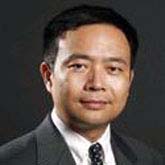Website
https://biodesign.asu.edu/bioelectronics-and-biosensorsSummary
A variety of sensors ranging from embedded systems to handheld devices may one day analyze your breath for the first telltale signs of disease, identify pollutants in drinking water, or keep society safe by detecting trace vapors and signatures of explosives.
We create new enabling tools for biomedical and environmental health research, develop wireless personal sensors for mobile health solutions, and explore fundamental phenomena of nature at the single molecule level for next-generation detection technologies.
In order to detect the presence of specific chemicals in the environment, or biomarkers in the body, extremely sensitive and selective sensors are required. An accurate and fail-proof early warning system for chemical and biological warfare agents and explosives also require sensors. In spite of many years of research, few systems can meet these challenges.
To achieve these goals, we utilize a multi-scale, multi-technology and system-level approach. We explore and integrate device and material functions from the nano- to micro- to macroscale. We hybridize different sensing platforms, including electrical, electrochemical, mechanical and optical signal transductions, to achieve results that a single sensor alone cannot deliver.We use a system-level approach that optimizes devices from sample collection and sensing elements to signal processing and communication to deliver a complete solution to real-world problems.
To develop pocket-sized wireless sensing devices, we hybridize different sensing platforms, including electrical, electrochemical, mechanical and optical signal transductions. This permits us to achieve results that a single sensor alone cannot deliver. We use a system-level approach that optimizes devices from sample collection and sensing elements to signal processing and communication to deliver a complete solution to real-world problems.
From both experimental and theoretical aspects, we are developing techniques to measure the fundamental properties of single molecules, their electronic, mechanical, and thermoelectrical properties, etc, and exploring their application for next-generation detection devices.
Our research team can accomplish this because it involves a diverse group of researchers and students from bioengineering, electrical engineering, device physics, chemistry and biochemistry, and materials science. Among our collaborators are organic chemists and theoreticians from around the world, and industry that include researchers from Motorola, Intel, Dial, Biosensing Instruments among others.



 Nongjian Tao
Nongjian Tao